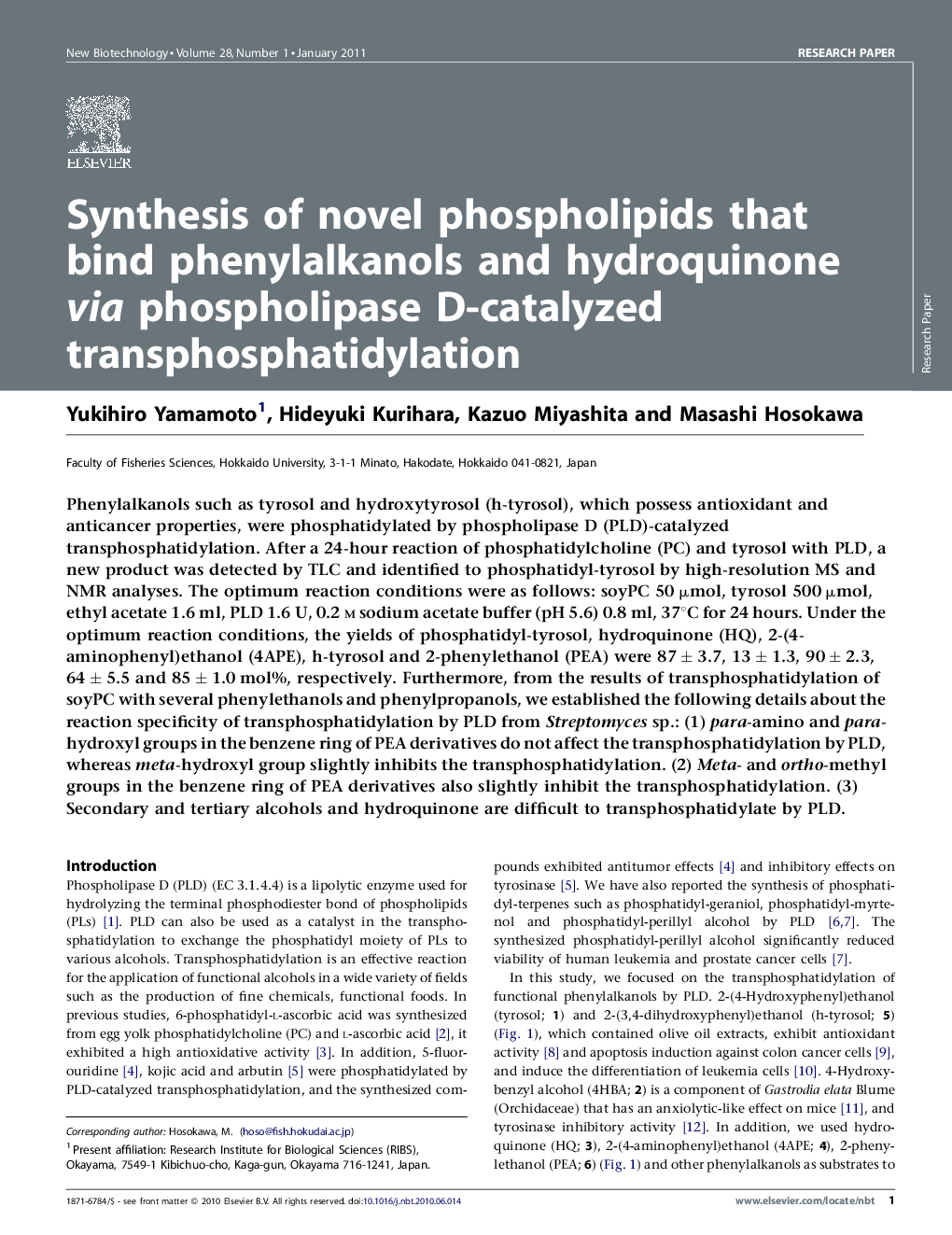| Article ID | Journal | Published Year | Pages | File Type |
|---|---|---|---|---|
| 33882 | New Biotechnology | 2011 | 6 Pages |
Phenylalkanols such as tyrosol and hydroxytyrosol (h-tyrosol), which possess antioxidant and anticancer properties, were phosphatidylated by phospholipase D (PLD)-catalyzed transphosphatidylation. After a 24-hour reaction of phosphatidylcholine (PC) and tyrosol with PLD, a new product was detected by TLC and identified to phosphatidyl-tyrosol by high-resolution MS and NMR analyses. The optimum reaction conditions were as follows: soyPC 50 μmol, tyrosol 500 μmol, ethyl acetate 1.6 ml, PLD 1.6 U, 0.2 m sodium acetate buffer (pH 5.6) 0.8 ml, 37°C for 24 hours. Under the optimum reaction conditions, the yields of phosphatidyl-tyrosol, hydroquinone (HQ), 2-(4-aminophenyl)ethanol (4APE), h-tyrosol and 2-phenylethanol (PEA) were 87 ± 3.7, 13 ± 1.3, 90 ± 2.3, 64 ± 5.5 and 85 ± 1.0 mol%, respectively. Furthermore, from the results of transphosphatidylation of soyPC with several phenylethanols and phenylpropanols, we established the following details about the reaction specificity of transphosphatidylation by PLD from Streptomyces sp.: (1) para-amino and para-hydroxyl groups in the benzene ring of PEA derivatives do not affect the transphosphatidylation by PLD, whereas meta-hydroxyl group slightly inhibits the transphosphatidylation. (2) Meta- and ortho-methyl groups in the benzene ring of PEA derivatives also slightly inhibit the transphosphatidylation. (3) Secondary and tertiary alcohols and hydroquinone are difficult to transphosphatidylate by PLD.
